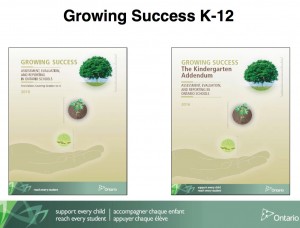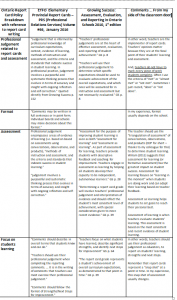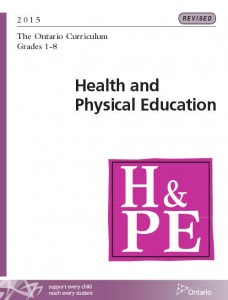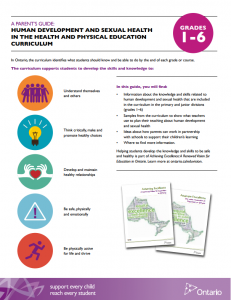As an elementary teacher, with 18 years experience, I’ve seen my share of violence in schools. In 3 lockdowns, I’ve had to keep my students quiet, calm, and safe. As a classroom teacher, I’ve had objects thrown at me (like chairs). More than once, I’ve been purposely hit and kicked so hard, bruises were left. I once had a student put an unknown substance in my tea. I’ve been harassed and threatened by students’ parents too many times to count. After making a call to the Children’s Aid Society, I had to be escorted to my car as my student’s mother was harassing me. I have personally witnessed students destroy/trash teachers’ classrooms and their personal property. And based on my own observations, the violence is increasing in schools.
There is research to support my anecdotal observations. Based on information from ETFO (Action on Violence in Schools), ETFO members are increasing facing violent incidents in schools and workplaces. This violence increases physical and mental harm to both adults and children. With violence, teaching and learning is disrupted. Teachers and students can develop anxiety that violence will occur again.
The Ontario English Catholic Teachers Association (OECTA) completed a comprehensive member research survey in June 2017, carried out by Pollara. The survey noted that elementary schools tend to experience more threats and acts of violence than high schools.
The highlights of the report, OECTA Survey of Violence in Schools, were telling:
- Nearly nine-in-ten teachers experienced or witnessed violence or harassment in schools
- 94% of all violent incidents were perpetrated by students
- 70% of teachers witnessed violence
- 60% of teachers personally experienced violence
- 15% of incidence involved weapons – 76% were classroom objects, 22% were a knife/blade, 8% were gun/fire arm/shotgun
- elementary teachers experienced … threats of physical assault 43%; attempted physical assault 42%; actual physical assaults 36%
The resultant impact on teachers was also long term:
- 58% of teachers experienced significant psychological stress
- 56% of teachers experienced property damage
- 40% of teachers experienced physical harm
- 26% of teachers had to take time off work due to resultant health issues
So what are the schools doing about this violence in schools?
- 25% of teachers were either encouraged or actively pressured by administrators to not fill out a reporting form (often called Violent Incident Report)
- 25% of teachers who personally experienced violence were encouraged by administration to not report the incident to police
Teachers also reported that they felt administration did not take violent incidence seriously.
- 82% of teachers were not given appropriate resources/tools to deal with violent situations
- 74% of teachers who experienced violence and harassment reported they did not feel safe in their classrooms
- 72% of teachers reported that students and staff did not receive adequate protection against violence and harassment
ETFO has put an action plan in place, ETFO’s Action Plan on School Violence, to make members’ schools and workplaces safer. This includes excellent videos, a brochure, and a poster. I strongly encourage you to check out these resources as they provide critical information to protect you, your colleagues, and your students against violence in schools.
So what can teachers do to support ETFO’s Action Plan on School Violence?
- Make schools and workplaces safe
- ETFO’s call to action and strategy to address violence in school board workplaces involves many stakeholders and it starts with collaboration, training and accountability (from ETFO’s Action Plan on School Violence).
2. Know your rights to a safe workplace (ETFO’s Action Plan on School Violence Brochure)
Under the Occupational Health and Safety Act:
- Your principal has a duty to provide you with information about the risks of harm from a person with a history of violence.
- You may refuse to work or do particular work where you have reason to believe that the work is likely to endanger you.
- If you believe you are being endangered by workplace violence, then report your concerns to the principal right away and get immediate assistance.
School Boards & Principals
- School boards and principals are required to investigate and deal with reports of workplace violence and serious student incidents.
- Both, boards and principals, are required to conduct assessments of the risks of violence as often as necessary to continue to protect ETFO members from the risks of harm.
- Both, boards and principals, are required to take measures and procedures to control identified risks. In the school setting, these steps could include, for example, a safety plan, a behaviour plan, staffing and supports.
- You have a duty to report violence in schools (ETFO’s Action Plan on School Violence Brochure)
- Under the OHSA, ETFO members have specific duties to report workplace violence.
- Under the Education Act, ETFO members have specific duties to report serious student incidents. These duties are further described in Ministry policies PPM 144 and PPM 145.
- Should workplace violence cause an injury or illness, an accident/injury/illness report is required. It is just as important to seek medical attention for psychological and emotional harm as it is for physical injury when workplace violence happens.
- Your duty to report workplace violence and serious student incidents cannot be limited by age, needs or other mitigating factors. If you are having difficulties making these required reports, get in touch with your steward or ETFO local as soon as possible to get support.
- Support for ETFO Members
- Contact your ETFO local for advice and support at etfo.ca/link/locals.
- You can also contact ETFO provincial staff in Professional Relations Services at 416-962-3836/1-888-838-3836.
- For information and resources on workplace violence and serious student incidents, visit etfohealthandsafety.ca .
- Educate yourself and your colleagues on workplace violence
As noted above, ETFO’s Action Plan on School Violence has been put in place to make members’ schools and workplaces safer. I strongly encourage you to check out these resources below as they provide critical information to protect you, your colleagues, and your students against violence in schools.
ETFO’s Action on Violence in Schools
ETFO’s Action on Violence in Schools Poster
ETFO’s Action on Violence in Schools Brochure
Supporting ETFO Members – PRS Matters
I have experienced violence and harassment in schools but I have not been seriously injured. Based on the results from the OECTA Survey of Violence in Schools, I have been fortunate.
Know Your Rights to a Safe Workplace!
It’s up to you to support ETFO’s Action Plan on School Violence.
It’s up to you to fulfill your Duty to Report school violence.
With your support, together, we can make schools safer for our schools, our colleagues, and our students.
Collaboratively Yours,
Deb Weston






 esented as LGBTQIT. In addition, we discussed LGBTQIT inclusion during the Day of Pink and while discussing human rights topics. I received notes from parents asking me not to talk about same sex couples on the Day of Pink. I also had students missing from school on the Day of Pink. Some parents believed that discussions of inclusion were only limited to specific school days. Parents needed to realize that teachers talk about inclusion, as needed, especially when students rights are being suppressed. Inclusion is not limited to skin colour, culture, religion, chosen head coverings, ethnicity, ancestry, citizenship, disability, or diet.
esented as LGBTQIT. In addition, we discussed LGBTQIT inclusion during the Day of Pink and while discussing human rights topics. I received notes from parents asking me not to talk about same sex couples on the Day of Pink. I also had students missing from school on the Day of Pink. Some parents believed that discussions of inclusion were only limited to specific school days. Parents needed to realize that teachers talk about inclusion, as needed, especially when students rights are being suppressed. Inclusion is not limited to skin colour, culture, religion, chosen head coverings, ethnicity, ancestry, citizenship, disability, or diet.